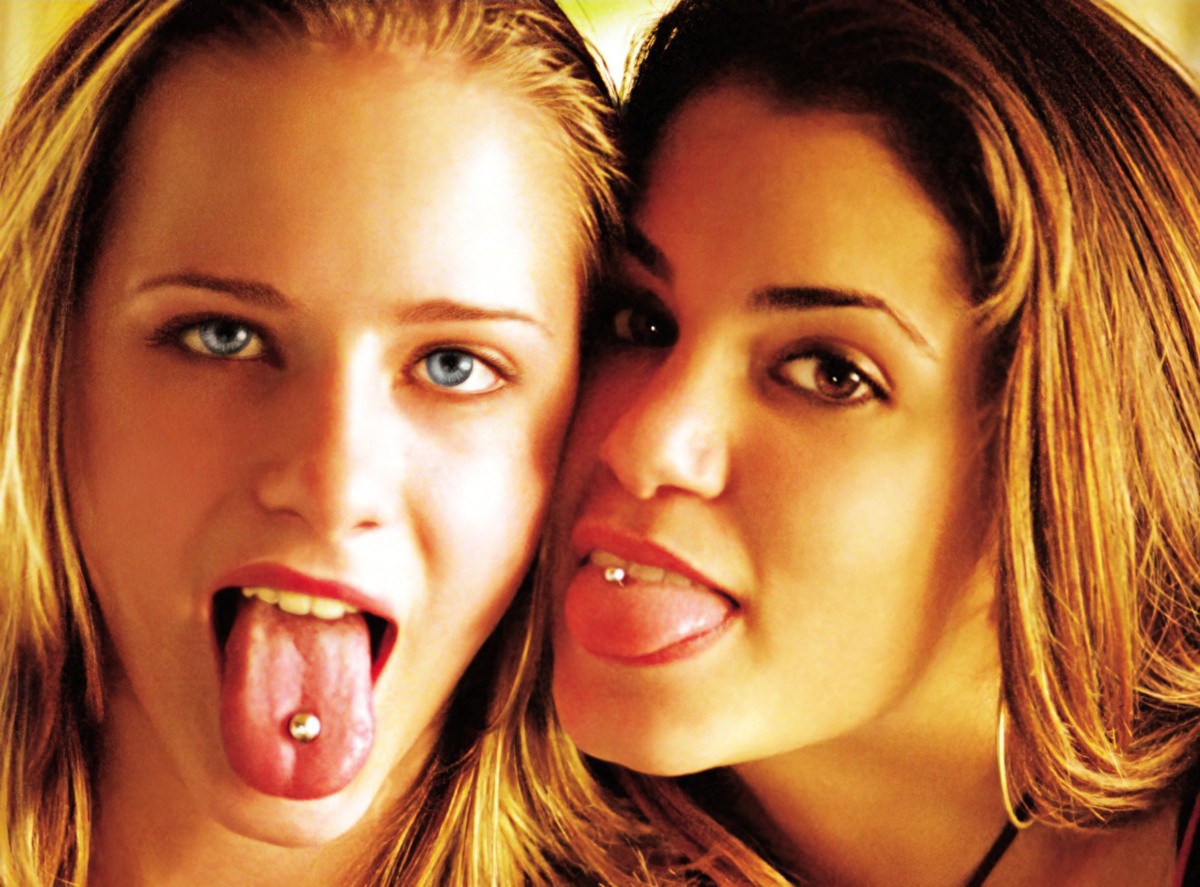Thirteen is a 2003 feature length indie film which punches above its low-budget weight thanks to expert storytelling and characterisation. Director Catherine Hardwicke co-wrote the script with her erstwhile step-daughter Nikki Reed, who also stars as Evie Zamora. Hardwicke has known Nikki since Nikki was five.
At the time this film came out I was teaching at a girls’ high school and this film impressed me for its realism. The realism is terrifying, in fact. I taught girls who idolised the young heroes in this story, and one who had been burning herself with cigarettes hoping to ‘be just like’ Tracy. This is definitely a film that needs to be watched with parental commentary, but it should be watched anyhow. This is realism for many adolescent girls. The intense relationship between Evie and Tracy, one built on dominance as much as it is built on love, is highly recognisable. Not all teenage girls get into one of these relationships, but many do. As Rachel Simmons writes in her book Odd Girl Out (published around the time this film came out), a relationship dynamic like Tracy and Evie’s is preparingTracy for relationship abuse later, when she gets into a romantic relationship. Better she learn some basic lessons now, while her mother is there to protect her somewhat.
This is why young women should see this film. Better they process it from the other side of a screen.
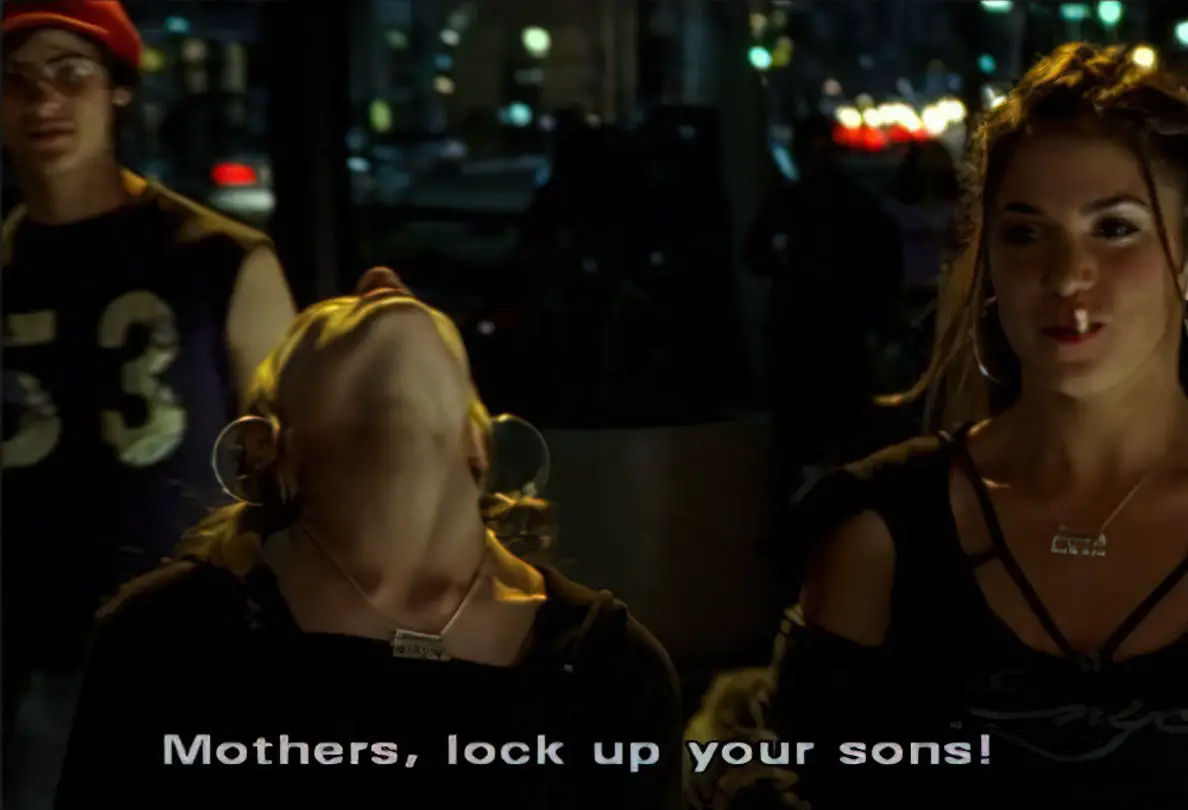
LOGLINE OF THIRTEEN
Sometimes I wonder if thirteen is considered unlucky because being thirteen-years-old is so hard.
A thirteen-year-old girl’s relationship with her mother is put to the test as she discovers drugs, sex, and petty crime in the company of her cool but troubled best friend.
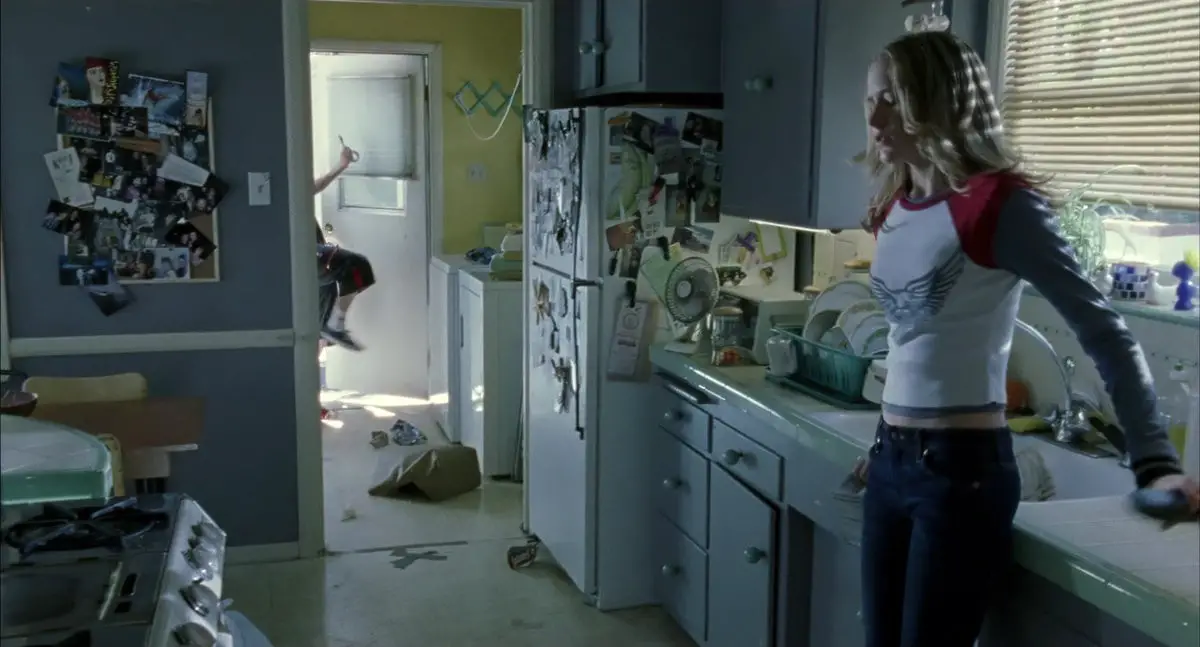
GENRE OF THIRTEEN
Hardwicke first intended to write comedy, but soon realised after talking with Nikki that she couldn’t make a single thing up more interesting than what was going on in teenage girls’ real lives, so the film turned into a harrowing drama. So there’s an interesting insight into how much a story can change between conception and final draft. Stories can leap from one genre to another.
The actors say that in the theatre at the Sundance screening they heard uncomfortable giggles throughout the film, especially at times of high intensity. They possibly got as many ‘giggles’ as they would have had they produced an actual comedy. Audiences are weird like that.
Thirteen is not a thriller — it is a straight drama. But the structure involves the coming off of a mask,which makes the structure similar to transgression comedies and also noir thrillers. For much of the movie, Tracy Freeland is acting as a pseudo-adult, ditching her mother who she still needs very much in favour of a girl who has not been so well protected from the world. How does Hardwicke wrap up this story? It’s a story chock full of conflict — arguments with Tracy’s mother, father, brother, teacher and former best friends. Therefore the ‘big struggle sequence’ needs something extra. In this case it’s the coming off of the mask. After rejection from Tracy’s mother, Evie Zamora outs Tracy to everyone as a thief, self-harmer, drug abuser and all-round evil person. While this portrait of her is not quite right either, it is in this scene that Tracy’s mother finally gets the full picture regarding what’s been going on with her daughter. The mask is finally off. In the outtake scene we see Tracy on a roundabout (a regression to childhood), emitting a primal scream. The torment of keeping up this facade of rebel has passed.
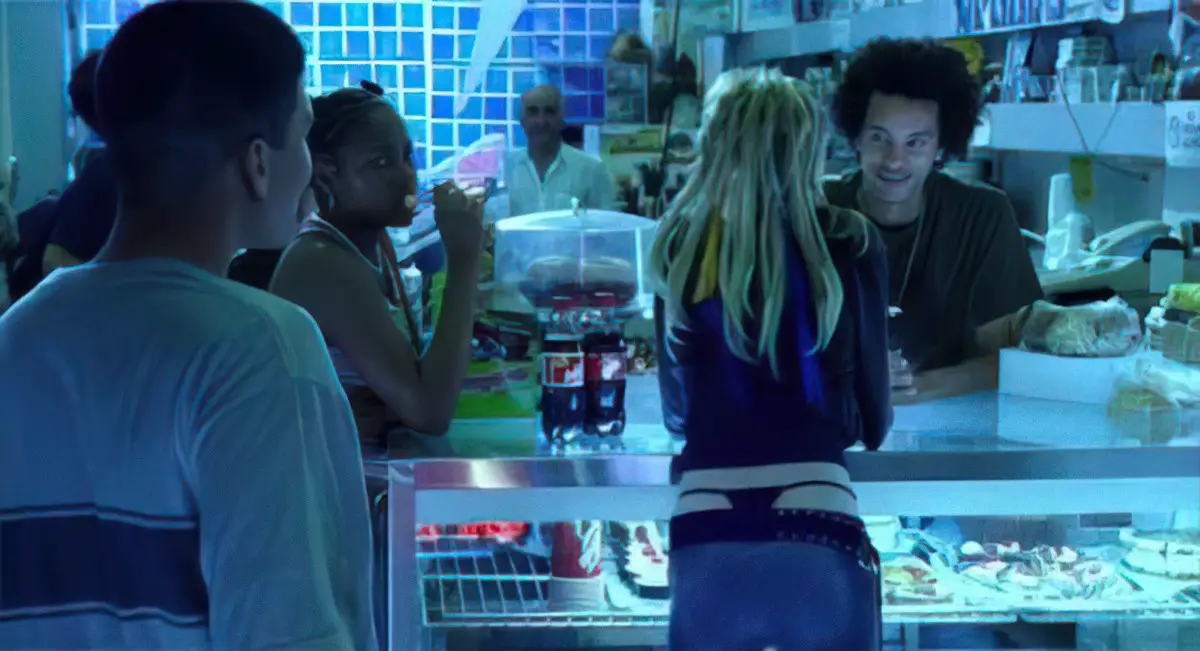
SETTING OF THIRTEEN
The story is set basically where it is shot — inevitably, since these are landmark places:
Most of the scenes were filmed on location, with some on Melrose Avenue, Hollywood Boulevard, Venice Beach. The Freeland home scenes were shot at a rented house in the San Fernando Valley. The many outdoor school scenes were shot at Portola Middle School in Tarzana, most of them on a single Saturday in searing heat.
Wikipedia
Hollywood is a great place to set a story like this. Hollywood is the epicentre of image over substance. Though this story could have been set in any small town in the Western world, by making these girls so proximal to all that glitters, the effect of the media on how they behave is crystal clear. The media influences the kids – there are glossed over eyes watching the kids, from the posters on the walls.
Mel’s house is a real house which Hardwicke rented for the duration of shooting. They decorated the place themselves. Holly Hunter was surprised that the water really runs, because she was more used to sets and props. In the story, Mel has given the best room to her daughter and kept the room with the crappy wooden panelling for herself. This is indicative of how Mel feels about her daughter. She wants the best for her. The chicken coop just happened to be there, but they decided chickens would fit Mel’s character as she is super thrifty.
Most of the film is steady cam. This is partly to do with the low budget and the need to film in some very tight spaces, such as the bathroom of a real house (as opposed to a set). The only scenes not shot with steady cam are the opening and closing scenes, done with a tripod. (And also the scene where Brady picks up Tracy on the street, in which the camera was put onto a shopping trolley.) The low-budget feel of steady cam obviously serves to make an environment more gritty. Hardwicke explains in the commentary how very rushed they all were. With no time to relax, this makes it through to the final cut, where the characters bring real energy and movement into the house.
The poster is Evie’s eyes on another woman’s face.
‘Beauty is Truth’ The camera lingers on this billboard, which despite the low budget filming is not part of the natural environment — this is a poster made by the filmmakers, using Evie’s eyes photoshopped onto a model’s face. This is ironic since the pursuit of beauty means dishonesty, and in the end doesn’t mean anything at all. As the movie progresses, this billboard appears elsewhere (e.g. the gas station), where it is covered in graffiti. Tracy’s view of Evie has been tarnished. Beauty does not run deep with Evie.
At one point, Tracy is upset that her mother’s friend’s little girl is sleeping in her bed with the dog, and to make matters worse she has wet the bed. I have heard it said that when you’re poor, your bed is really important to you as your own space. When everything else is chaos, the bed can function as a respite, so to have that space invaded feels terrible.
STORY STRUCTURE OF THIRTEEN
SHORTCOMING
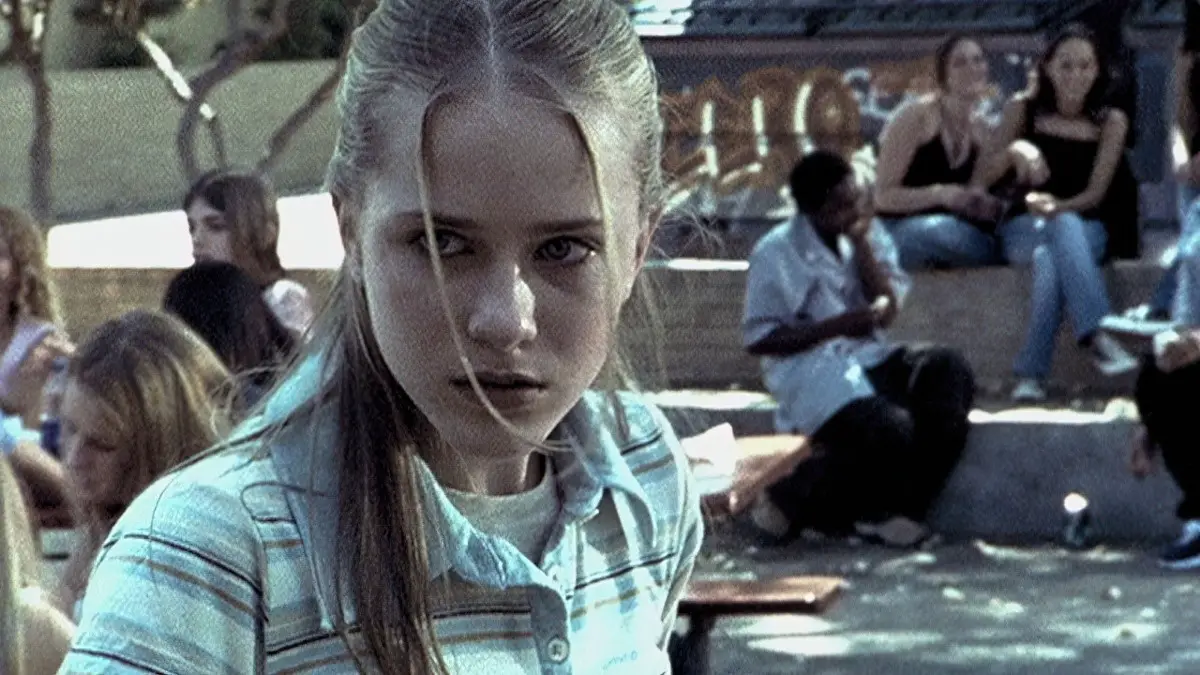
The three main characters, Tracy, Mel and Evie, are established as soon as possible:
Often, the opening sequence is ‘the whole story in a nutshell’. In the opening scene of Thirteen, two girls sit on their bed, high, asking the other to hit them. The hitting symbolises the destructiveness of the friendship, and the fact that they’re high shows that this is a temporary, volatile time in their lives. Once Tracy gets through adolescence, her life will never be this intense again. At least, not in the same way.
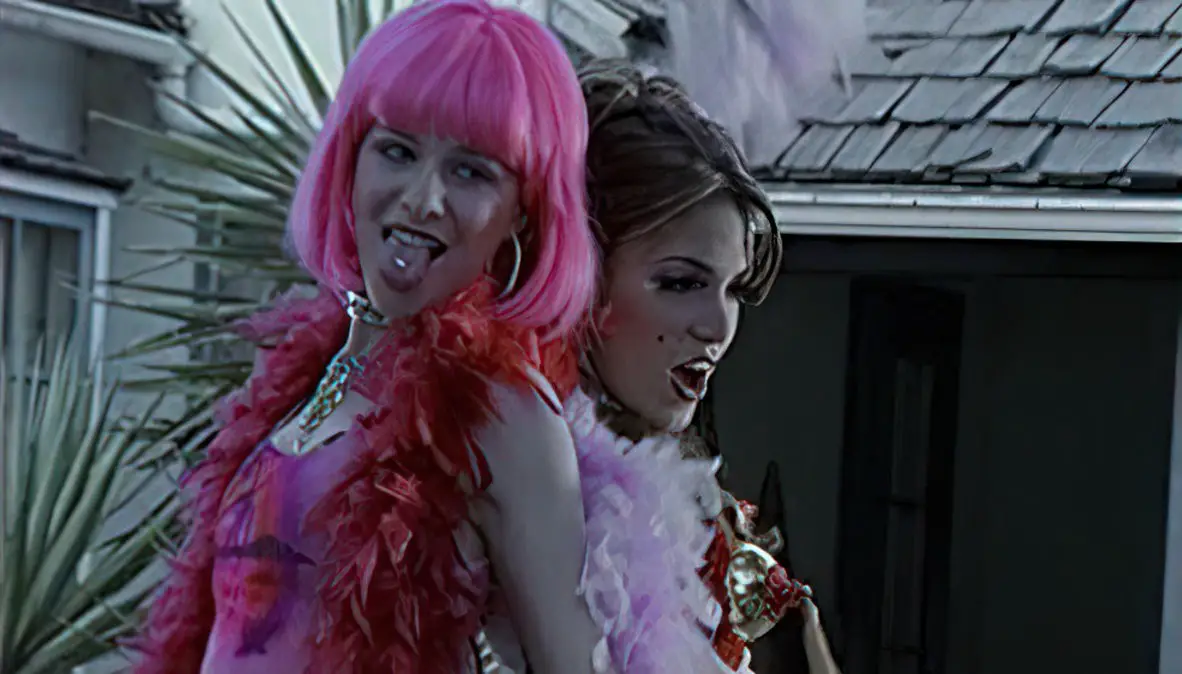
The mother, Mel, is established as a kind, open-house, trendy woman who needs a strong community around her even at her own expense. (She is an addict.) Tracy shares a poem with Mel and Mel calls Tracy ‘baby’ as a term of endearment. This shows their closeness, but the poem is ‘really heavy’ and ‘scares me a little bit’. This is the inciting incident. Something between them has changed. In fact, this story opens in medias res. A lot has happened in Tracy’s life before this moment where she decides to ‘Break Bad’. (Tracy is the teenage girl equivalent of Walter White.) This history is conveyed mostly via the return of Brady, and Tracy’s negative reaction to a guy who appears pretty chill to us, the newcomers. By the way, Holly Hunter had to sign onto this film with much lower pay than usual. Before she agreed to it, she said Mel’s character had to be more fleshed out. Hardwicke spent a day or two rewriting Mel, and then Holly Hunter agreed to play her. This was probably a great call on Hunter’s part, because now we have a double reversal plot, like Lady Bird, in which both mother and daughter grow. The complexity of this mother puts a lot of YA novel mothers to shame. I feel we need more complex YA mothers in general.
At middle school, Evie Zamora saunters past. The other girls gossip about Evie Zamora’s scar but Tracy sticks up for Evie. Notice the girls have heard that Evie saved her little brother in a fire, whereas Tracy tells Mel her cousin’s boyfriend ‘put things inside me and pushed me into a fire’ much later. The audience never knows the truth about Evie Zamora, though we are given a clue at one point: The newspaper article Mel has in her hand when the girls come out in their boas and stickers confirms that some of what Evie said is true. (It’s subtle.)
Also in that scene:
“Is that my belt, Evie?”
“Yeah.”
Evie has no boundaries, because she has had her own invaded.
Evie is a girl full of contradictions, and we can never know girls like this as outsiders. For now we know that Evie is a popular girl who relies on her sexuality to win approval and love — a huge psychological shortcoming that Tracy, in her naivety, cannot yet see. This is Tracy’s shortcoming.
For obvious reasons, most films that feature underage sex star older actors — Carey Mulligan, playing 16 and 17 in An Education, was in her early 20s; Bel Powley, playing 15 in The Diary of a Teenage Girl, was too. While there’s a logistical and moral logic to casting adults to play young people in explicit scenes, these choices distort our sense of what teenagers actually look like. (Films like Thirteen, and more recently Bo Burnham’s Eighth Grade, are notable exceptions.)
The Cut, in a review of ‘The Tale’
DESIRE
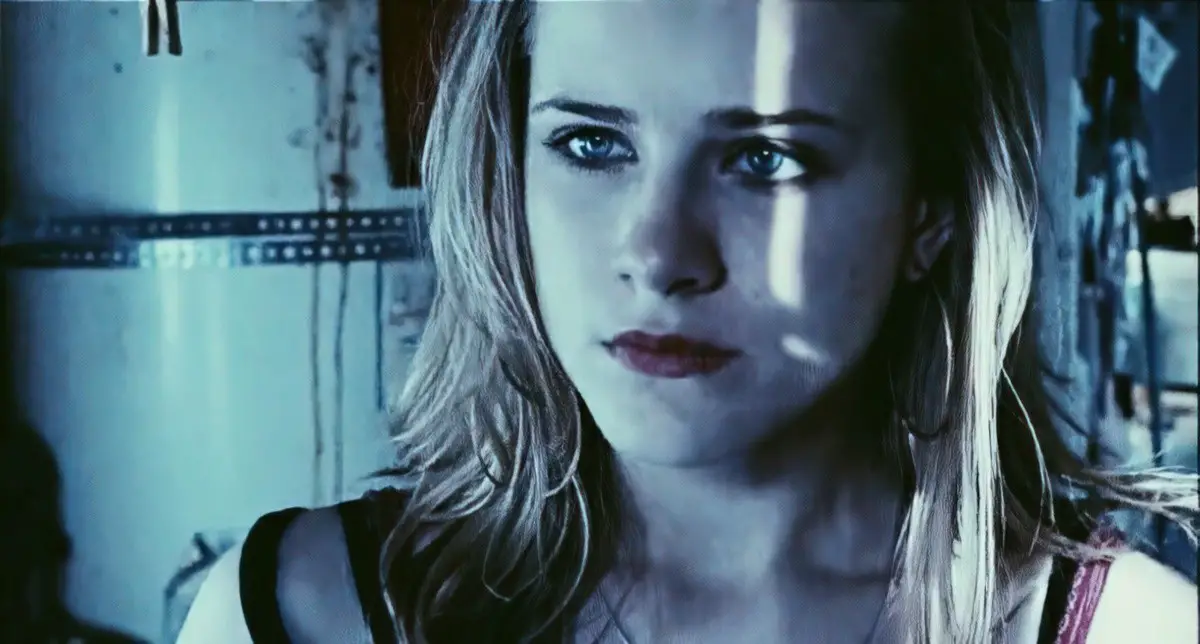
At school she is teased for her cabbage patch clothes, obviously influenced by her hippie mother. (Similar to Marcus in About A Boy.) When Tracy refuses to be called ‘baby’ she throws away her girl clothes. Something has switched over in her, something to do with Evie Zamora. Trying to do the right thing, Mel takes Tracy shopping at a traveling market type place where she is friends with the vendor. (She is friends with everybody. Tracy must want to be like her mother, one some level, just gets it really ass backwards.)
Tracy is happy with these clothes for now, but will soon learn that even cooler hippie clothes are not impressive to Evie Zamora. She wants to embody Evie. This will mean becoming her symbolic twin.
Tracy wants Evie in a primal kind of way. The way Tracy falls for Evie is very much like a romantic date. The highs and lows will be just as intense. The director calls the initial scene between Evie and Tracy ‘the shoot out scene’. Did Evie give Tracy the wrong number, or has the number been cut off? This is also unclear, though when Tracy invites herself shopping anyway it’s clear Evie didn’t care whether she turned up or not. By the way, the lack of clarity around details like this, and about Evie’s true backstory, is an excellent example of how writers don’t need to cover everything, tying the story up with a bow. Evie is more intriguing because we never know her. A girl like Evie is never entirely knowable, anyhow. When Evie is mysterious to the audience, we understand how enticing and mysterious she is to Tracy.
What does Mel want? Compared to earlier times in her past (we are told she is an addict) she’s doing really well. She has a house, fully booked hairdressing clients who come to the house and who are also her friends, an honour roll daughter and a nice house. Her shortcoming is the addict boyfriend, who is actually pretty cool apart from the fact he’s an addict, so we can empathise with her there. She wants her family life to continue as it is, but with the addition of a lover of her own. Unfortunately by this point, the only men interested in Mel are themselves addicts.
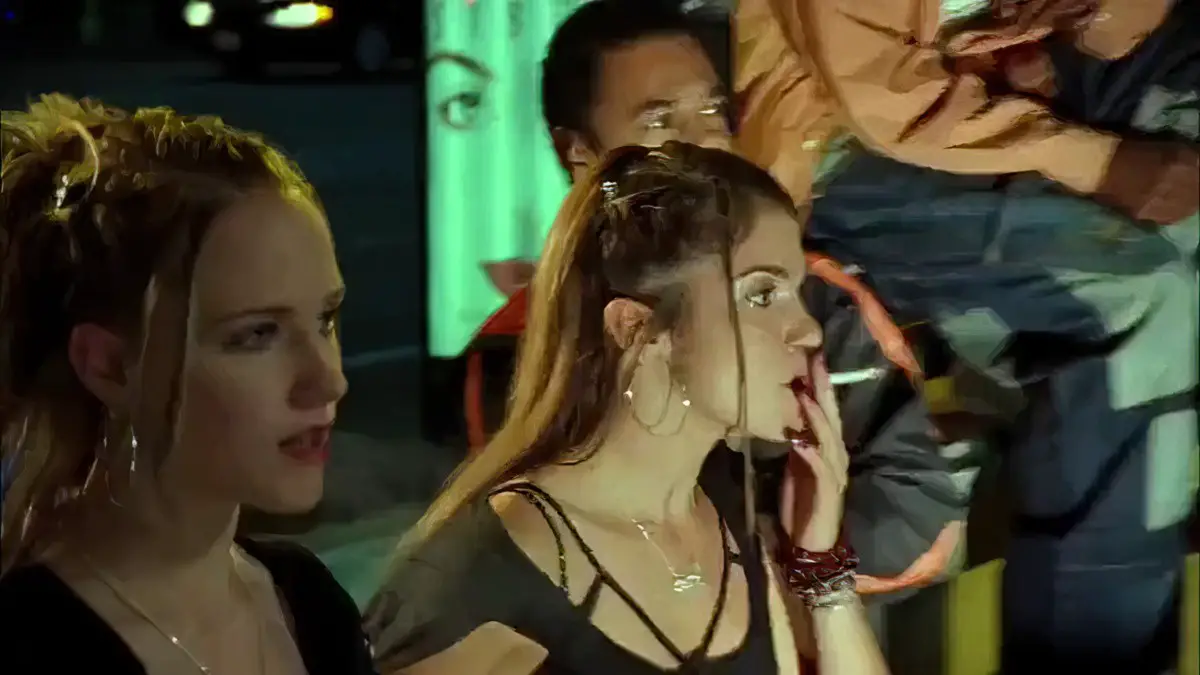
What does Evie want? Evie wants two things. She wants a stable home life but she also wants power. The two things are connected: If she can control people’s reactions to her she feels in control, despite living most of her life out of control.
OPPONENT
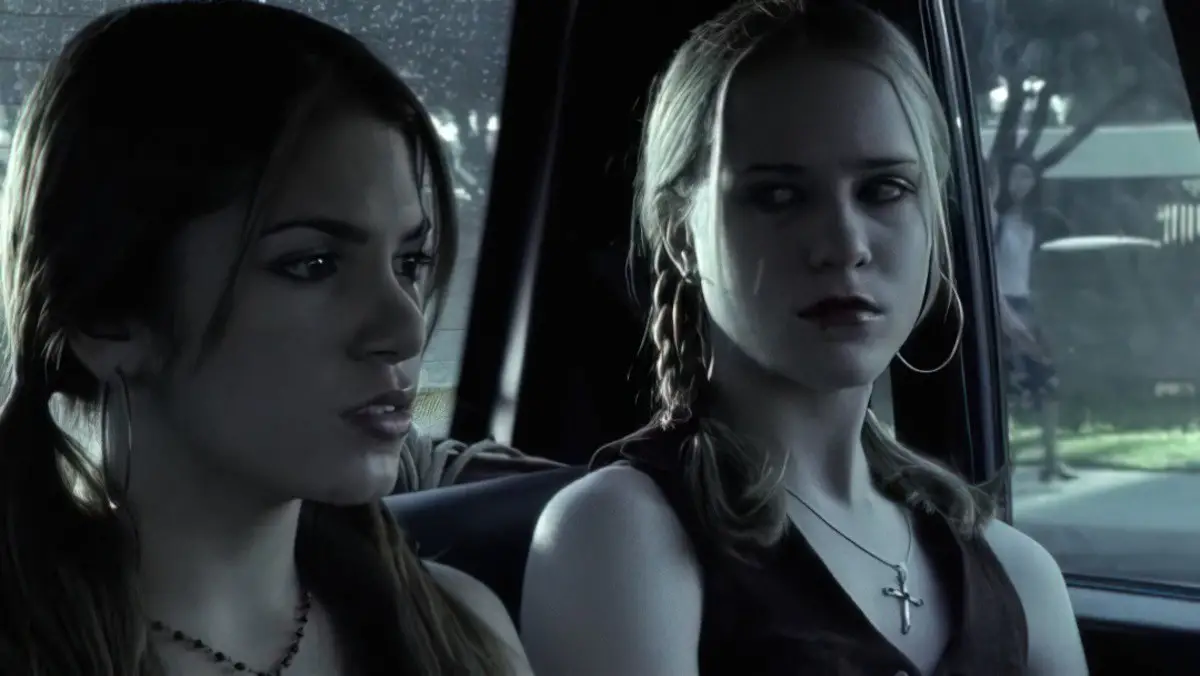
Like a romance, Evie and Tracy are each other’s main opponents. Tracy stands in the way of Evie moving in with fantasy-mom Mel (or so she perceives). Evie stands in the way of Tracy finding a genuine boyfriend, genuine friends and a mellow home life.
Brady is also an opponent, disrupting Tracy’s home life from wayback. Interestingly, those flashbacks of Brady getting high in front of Tracy were added in later, after Hardwicke realised Jeremy Sisto had played the guy too likeably. There had to be a better reason why Tracy felt negatively towards him, and the audience needed to see it for ourselves. There’s also the flashback of Brady having sex with Mel in front of Tracy, through those symbolically glassed walls of the house, which would have been pretty harrowing.
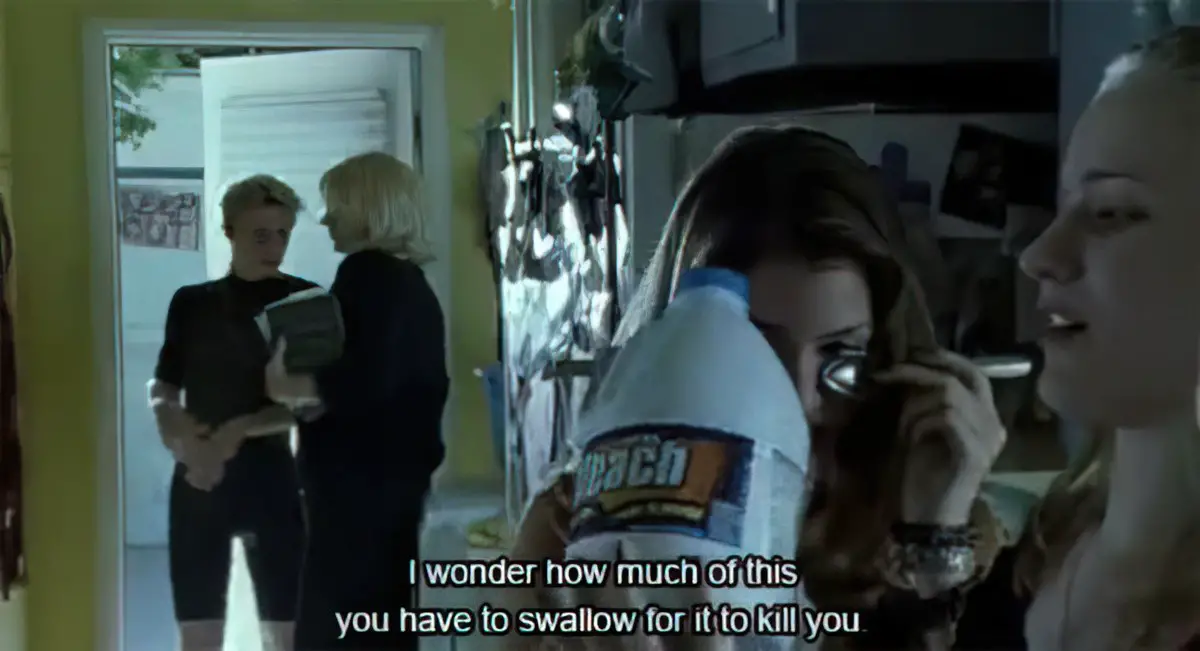
PLAN
Tracy plans to be just like Evie — dress like Evie, act like Evie. Then she will be as popular as Evie, and her entire life will change for the better.
When Evie realises Tracy’s mother is pretty cool (and easily manipulated) she plans to persuade Mel to let her move in with her. She plans to keep Tracy exactly where she wants her, and also plans to control the emotional tone of the household. This is a remarkably interesting and complex bit of characterisation and is masterfully pulled off.
Mel turns a blind eye to Tracy’s minor teenage transgressions, because she thinks they’re only minor. But when she gets a fuller picture she plans to get rid of Evie from her household by taking Evie back to her cousin’s. Unfortunately that in itself doesn’t fix things for Tracy, and in fact makes things temporarily worse. (It is by pure good fortune that Evie moves out of the area entirely.)
BIG STRUGGLE
In some stories it’s hard to pick the battle, because every scene feels like a version on a fight. Thirteen is one of those films. The Battle Scene is the one where the hero comes close to death, either actually or symbolically. The big big struggle scene in Thirteen is the hardest to watch — the four women sit in Mel’s living room. Over the course of this scene the group dynamics flip entirely. At first the mother figures are on side with each other, reasonably parenting the out-of-control daughters. Evie tries to get Tracy onside, all the while sacrificing her to the wolves by creating a false narrative of Tracy as the bad influence. By the end of this scene, Brooke and Evie are fighting as one team, against Tracy and Mel. Brooke accuses Tracy of being really cruel. “Right now you’re a really bad influence. You cheat, you lie, you steal.”
This brings Tracy and Mel back together, completing the character arc into the character equivalent of a home-away-home story (though Tracy never went on a geographical journey). Mother and daughter are close again.
Visually, in line with big struggle scenes, there’s a lot of shots around doors in this movie – going through doors, shutting doors, slamming doors, barging in through doors. The mother can be in the very next room but kids create their own worlds. All they need is a door. They made sure to include a scene where Mel closes the door on Tracy, even though it’s mostly Tracy closing the door on Mel.
The big struggle scene is challenging for writers, because there’s only so much conflict the audience can take, and only so many ways to depict a big struggle. Where a main character is fighting with a range of different characters, the writer/director goes out of their way to mix up the tone, venue and nature of the big struggle scenes. There’s usually an actual physical tousle thrown in there somewhere, too. Interestingly, the physical tousle may not be directly related to the actual ‘fight’. In Hud, for instance, there’s a pig wrestling event, which provides visual interest in a series of big struggle scenes, but the pigs have nothing to do with the big struggle — the pigs are not opponents.
In Thirteen, Hardwicke includes a physical tousle between the shouting matches — in the living room between Tracy and Mason. This is the first of a series of big big struggles with each of the characters in turn. How else does she mix up the struggle scenes?
- There’s a class big struggle of words between Tracy and her mother, which starts with discovery of the piercings.
- In the driveway, the Dad who has no time for his own kids rolls his eyes at this stoner boyfriend, but he is useless in his own way. However, nobody in this film is acted unsympathetically. We get the sense everyone has their own backstory, justifying their actions. Brady arrives back, barefoot, bearing a gift for Mel just like Evie did. Perhaps Evie has a sixth sense about how to win Mel over. She is an emotionally intelligent kid, in many ways.
- Brady is not a verbal guy, handing Mel the chicken without words. I only noticed his laconic nature when it was pointed out — the actor has very few lines, communicating mostly via body language. The gift of the toy chicken works. Brady wins Mel over, despite having been out on a bender. Mel is a pushover, which is exactly the reason why she lets her daughter become entangled with Evie Zamora in the first place. This is a wordless big struggle, which goes against audience expectation. Would Mel have accepted him back so easily had he turned up full of excuses?
- The movie is punctuated at regular intervals with Tracy cutting herself in the bathroom. This is Tracy battling with herself.
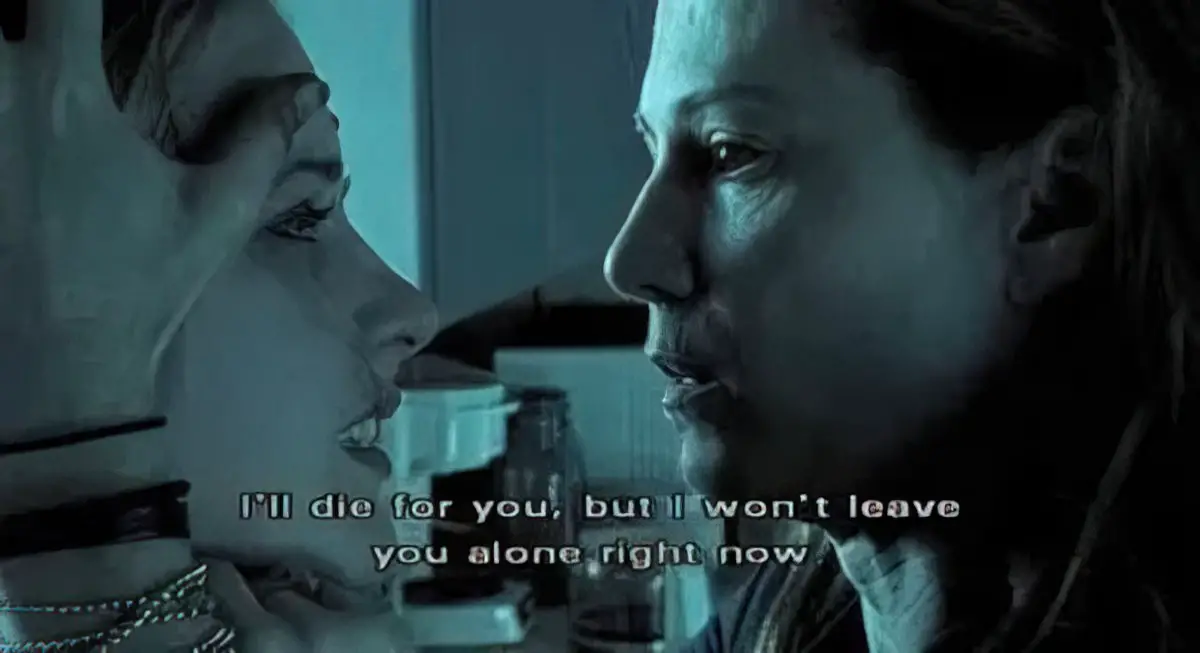
ANAGNORISIS
Mel knows how to comfort people when they are at their lowest. This is her special strength. She is a nurturer, and now she nurtures her own daughter. The audience sees — and hopefully Tracy does too — that her mother has her back, no matter how terrible she can be.
In contrast, Brooke has no revelation about Evie. Evie can do no wrong in Brooke’s deluded eyes. Brooke is emotionally impacted by the snide comment Tracy makes about her plastic surgery (a sore point with her), and is therefore unable to see Evie for who she is.
Even the minor character Brooke has had her own off-screen anagnorisis. Brooke walks out, saying she’s taking Evie to Ojai (a small town in California which is not Hollywood). Brooke has probably realised that her acting and modelling prospects are over, coinciding with the plastic surgery that didn’t make her young again, as she had promised. Brooke’s wish to be young again is brought sharply into focus by the two girls who really are young, and for whom things are far from perfect, despite their youth and their beauty.
NEW SITUATION
The colour comes back into the film after a series of montages showing Mel sleeping in the same bed as Tracy. Tracy wakes up to white light, then fades into a scene where Tracy swings on a roundabout – childlike – and lets out a primal, cathartic scream. She is free of Evie and now knows that her mother has her back, even when she’s at her worst.
Though Evie has left town, life isn’t going to be all roses for Tracy from here on. There is a real mess of a social situation that Evie has left behind:
- Evie set Tracy up with another girl’s boyfriend, and this girl has already threatened to beat Tracy up.
- Tracy’s relationship with her brother can’t ever be so innocent again, as she has seen the side of him that objectifies girls (unless that girl happens to be his sister).
- Tracy’s real father shows no interest (or capacity) to be a father to Tracy and her brother, which she will continue to resent.
- Mel’s junkie boyfriend looks set to continue on his benders, invading the home with his addictions. As long as he’s around Mel is vulnerable to her addiction in her own right.
